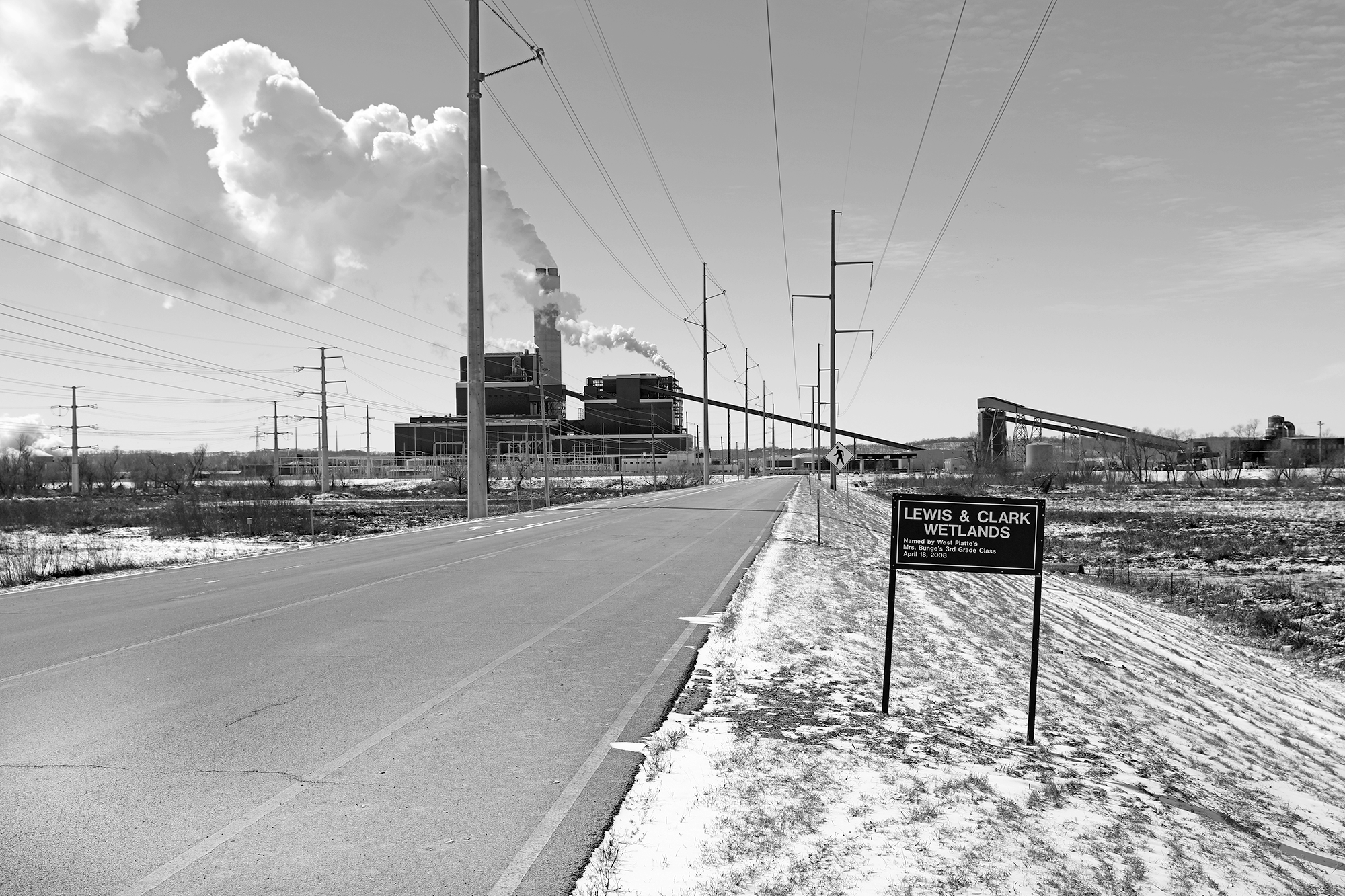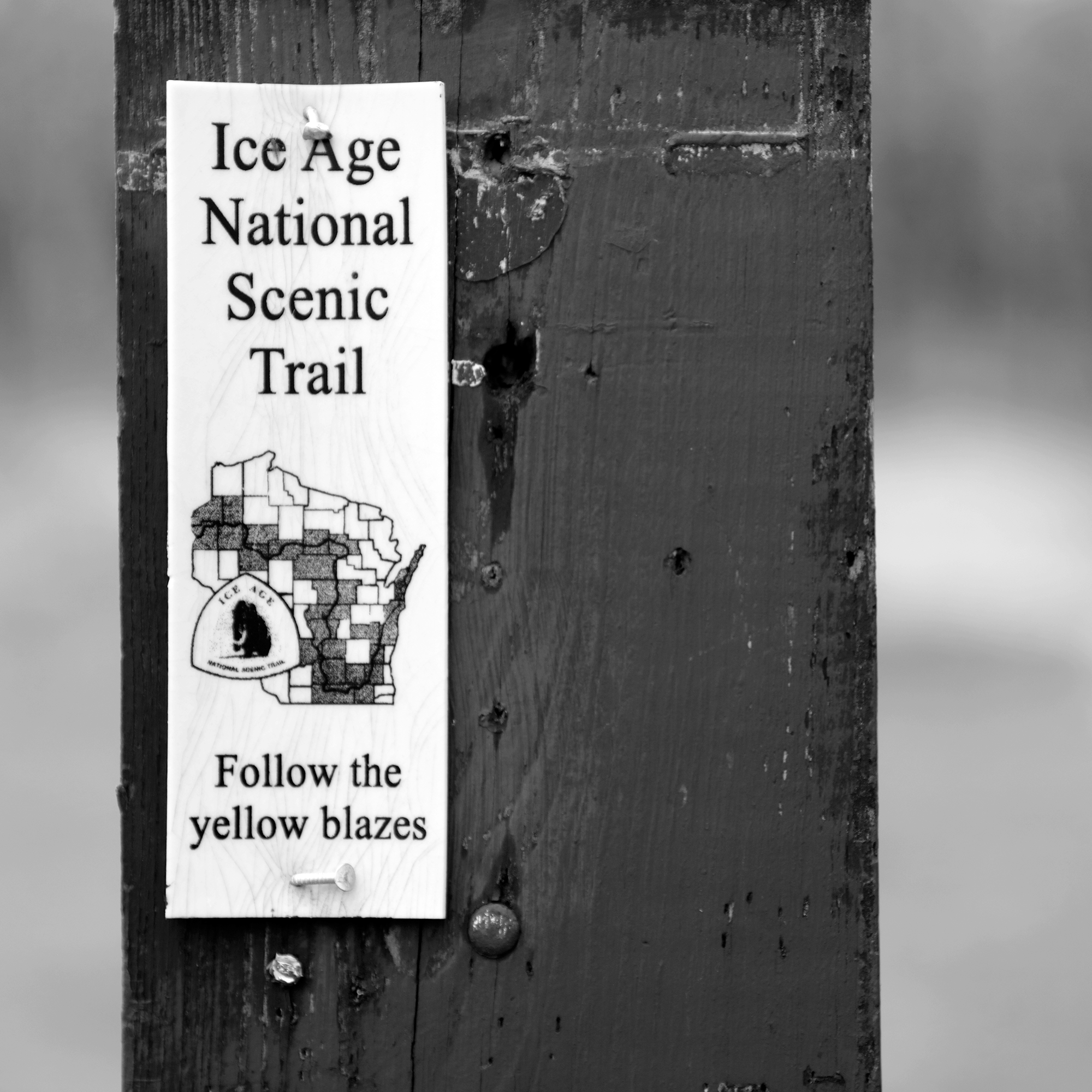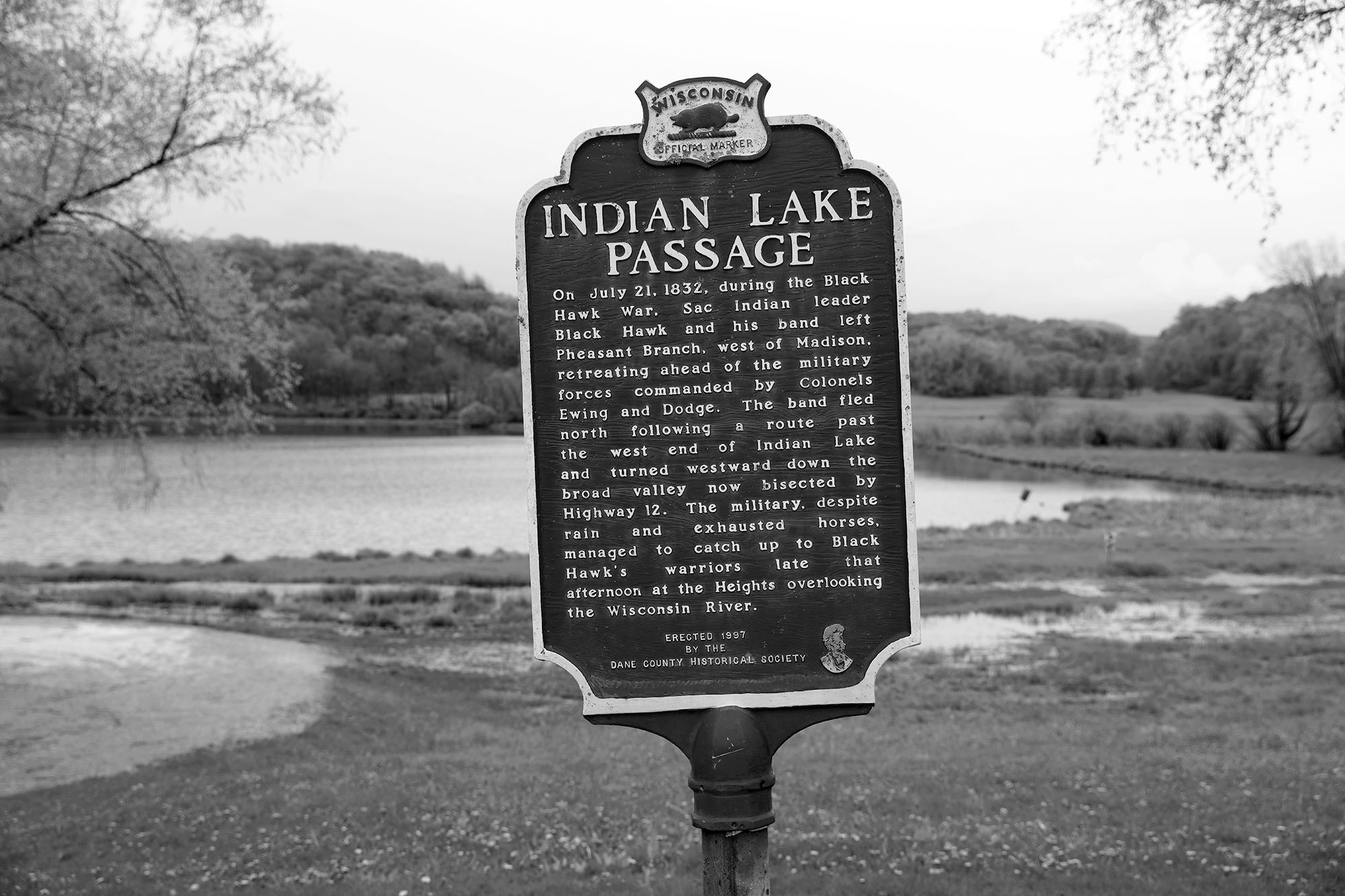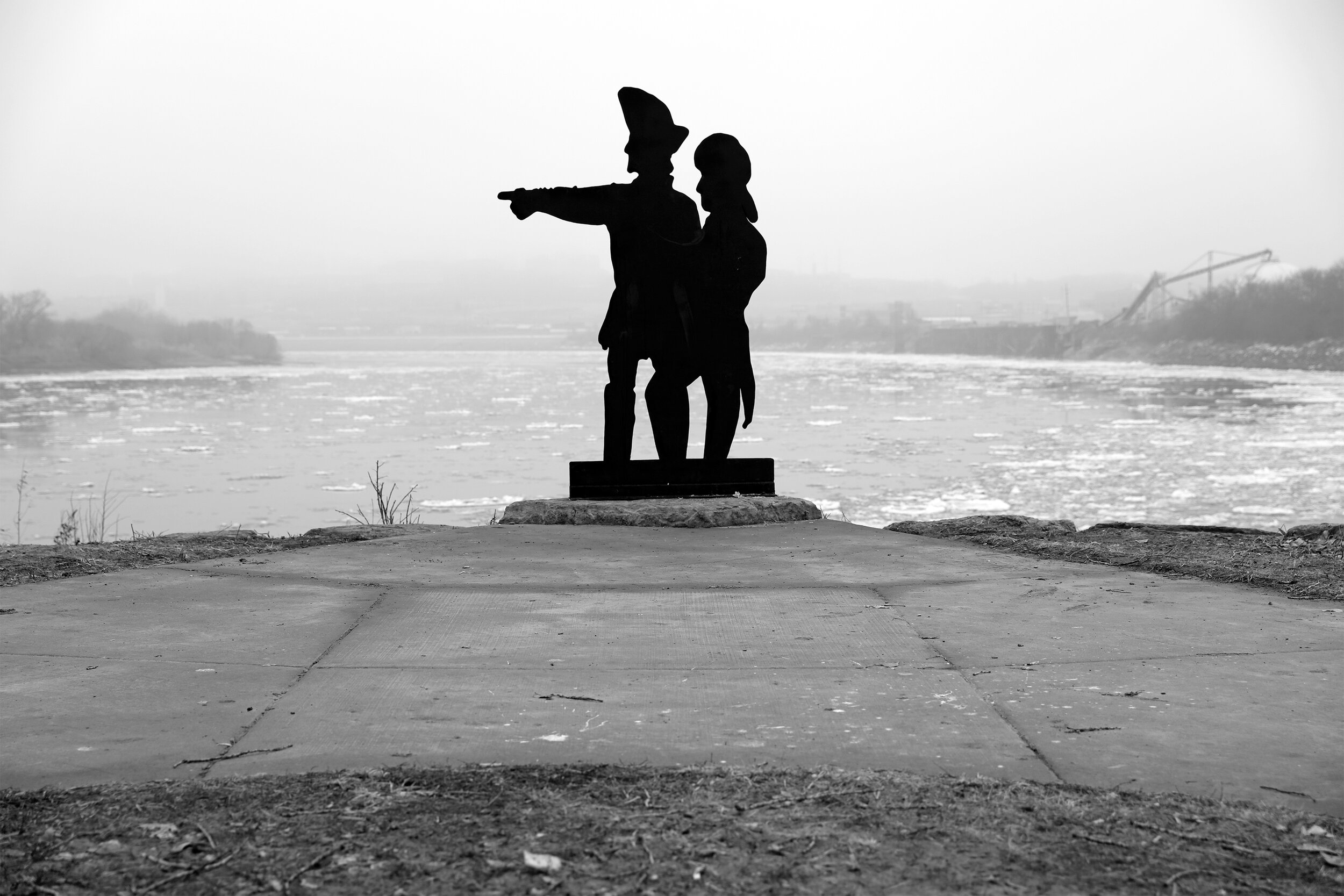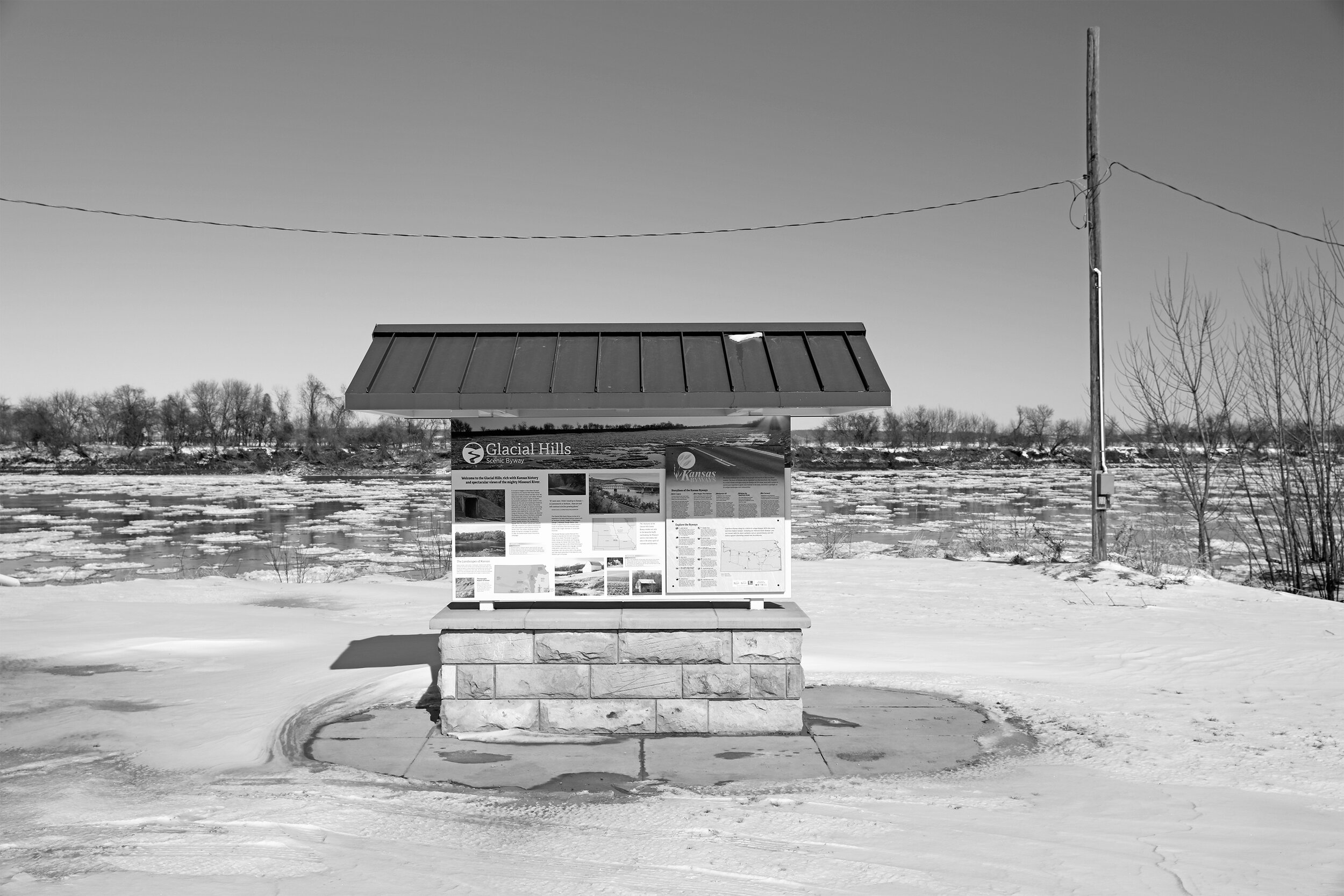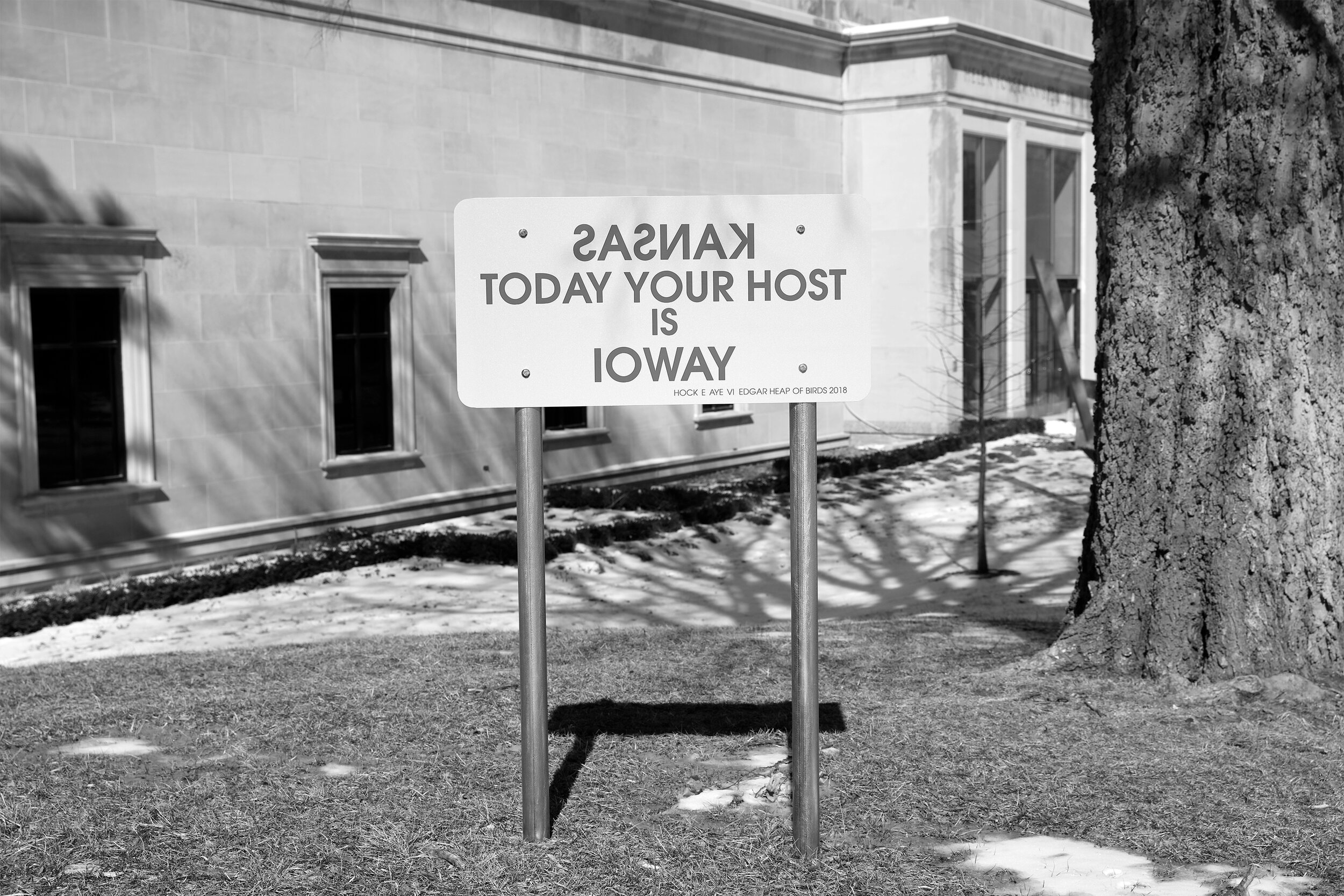Meskonsing-Kansan
Rozalinda Borcila & Nicholas Brown with Lance Foster, Field Guide 01: Meskonsing-Kansan (2019)
DOWNLOAD PDF / Meskonsing-Kansan is one of five Field Guides to the Anthropocene Drift published for Mississippi: An Anthropocene River
Meskonsing-Kansan is about place, or at least a way of thinking about place, regions, and counter-territories.
Meskonsing-Kansan is delineated by glacial limits—the limits of the so-called Kansan and late Wisconsinan glaciations—separated by more than 500 miles and 500,000 years.
Meskonsing-Kansan is articulated through a series of treaties, broken and unhonored except for the land cessions. In the wake of the 1832 Black Hawk War, the Ho-Chunk, for example, suffered multiple removals—from Wisconsin to Iowa, to Minnesota, to Dakota Territory, and then to Nebraska. If it can be defined by tracing Indigenous removals and land cessions, Meskonsing-Kansan can also be understood in terms of refusals and returns, particularly among the Ho-Chunk, Meskwaki, Iowa, and Kickapoo Nations. The effects of removals are felt today and everyday, and shape what Nick Estes calls “the Indigenous political practice of return, restoration, and reclamation of belonging and place.” [1]
Meskonsing-Kansan is composed of hundreds of watersheds above the confluence of the Missouri and Mississippi Rivers near present-day St. Louis and historic Cahokia. It can be traversed by following these ribbons of water not from source to sea, but from source to source—from the headwaters of the Delaware River, for example, to the Kansas and Missouri Rivers, and then up the Mississippi River to the Wisconsin River, and finally to the headwaters of the Kickapoo River.
Glacial narratives, like glacial erratics, dot the contemporary landscape. Meskonsing-Kansan is shaped and storied by a Glacial Manifest Destiny that pushes preordination, like a stone, back in time—beyond time immemorial into the vast expanse of geologic time or settler deep time. Despite the physical and symbolic violence enacted by these glacial narratives, they are precarious. They have failed to erase other stories—other ways of thinking with the land—and failed to persuade us of their own inevitability. Meskonsing-Kansan makes visible the (colonial) Anthropocene, which is to say it reveals how ongoing processes of colonization are transforming the earth. The (colonial) Anthropocene is everywhere, of course, but it is palpable in places like Iowa Point, Kansas, and Indian Lake, Wisconsin.
If Meskonsing-Kansan is an attempt to reckon with settler colonization in place, it is marked by our “good intentions,” which “present a set of deep colonizing (unintended) consequences that obscure ongoing relations of inequity and conquest.” [2] Meskonsing-Kansan is also “an epistemological counter-formation, which takes shape in reaction to the lived relations and incommensurable knowledges it seeks to render impossible and inconceivable.” [3]
Manu Karuka argues that settler sovereignty is more properly understood as countersovereignty, “a position of reaction to distinct Indigenous protocols governing life in the spaces the United States claims as its national interior.” [4] Like the “Middle Ground,” “Heartland,” “Driftless,” and other regional imaginaries, Meskonsing-Kansan is perhaps then a counterterritory or counterregion, a response to Indigenous land, to what Karuka describes as dynamic “modes of relationship,” and what Kyle Powys Whyte calls “collective continuance.” [5]
“If the Anthropocene is already here,” write Heather Davis and Zoe Todd, “the question then becomes, what can we do with it as a conceptual apparatus that may serve to undermine the conditions that it names?” [6] Following this provocation, we ask what, if anything, does Meskonsing-Kansan allow “us” to see, hear, feel, and do? And, who is the “us” interpellated here? If Meskonsing-Kansan, as an imaginative geography, “orients itself toward delegitimizing Indigenous modes of relationship and solidifying a colonial sovereignty unmoored from them,” what must we do then to undermine the conditions this “prose of countersovereignty” or “settler-colonial grammar of place” names? [7]
[1] Nick Estes, Our History Is the Future: Standing Rock Versus the Dakota Access Pipeline, and the Long Tradition of Indigenous Resistance (New York: Verso Book, 2019), 248.
[2] Sarah de Leeuw, Margo Greenwood and Nicole Lindsay, “Troubling good intentions,” Settler Colonial Studies 3, no. 3–4 (2013): 381–394;
[3] Manu Vimalassery, Juliana Hu Pegues, and Alyosha Goldstein, ”Colonial Unknowing and Relations of Study,” Theory & Event 20, no. 4 (2017), 1042.
[4] Manu Karuka, Empire’s Tracks: Indigenous Nations, Chinese Workers, and the Transcontinental Railroad (Berkeley: University of California Press, 2019), xii.
[5] Kyle Powys Whyte, “Settler Colonialism, Ecology, and Environmental Injustice,” Environment and Society 9, no. 1 (2018), 125-144.
[6] Heather Davis and Zoe Todd, “On the Importance of a Date, or Decolonizing the Anthropocene,” ACME: An International Journal for Critical Geographies 16, no. 4 (2017), 763, https://www.acme-journal.org/index.php/acme/article/view/1539.
[7] Karuka, Empire’s Tracks, 8; Mishuana Goeman, “Disrupting a Settler Grammar of Place: The Visual Memoir of Hulleah Tsinhnahjinnie,” in Theorizing Native Studies, ed. Audra Simpson and Andrea Smith (Durham: Duke University Press, 2014).

